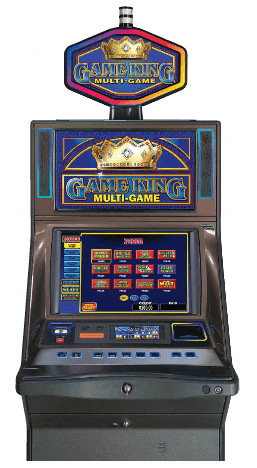PROCEED WITH CAUTION
A look at video blackjack
By John Grochowski
 In most state gaming commission revenue reports, wagering totals and payouts are listed for electronic gaming devices.
In most state gaming commission revenue reports, wagering totals and payouts are listed for electronic gaming devices.
The category isn’t “slot machines,” and that’s deliberate. In the information they release to the public, casinos and regulators do not differentiate among slot machines and other electronic games such as video poker, video keno and video blackjack.
The large majority of that play is on slots, of course. Video poker is next, and video keno has a smaller niche.
Video blackjack? It’s never really caught on, though that was the game practically everybody in the casino industry thought would make the big breakthrough when video games were coming to slot floors in the late 1970s and early 1980s.
Still, Seth, a regular reader who plays table blackjack and a little video poker, wrote recently to say he’d spotted a video blackjack game with full 3-2 paybacks on blackjacks. Not all video versions of blackjack pay 3-2. Since the earliest days of video blackjack, there have been games that pay only 3-2 on your two-card 21s.
Table players know we’re in an era of tightening rules on blackjack, and table games have a higher house edge than they used to. One of the changes has been the introduction of tables that pay only 6-5 on blackjacks. That’s especially prevalent on low-limit tables on the Las Vegas Strip.
Seth took a look at that 3-2 payoff on a blackjack machine and wondered if he’d be just as well off at the video version as playing at a table.
The answer is a definite “maybe,” but we’ll get to that along with a little arithmetic. But first, a little background and history.
Today’s video blackjack games come in all shapes and sizes. There are single-player games, usually part of the package on multigame machines such as IGT’s Game King. There are multiplier consoles. Some games pay 3-2 on blackjacks, while others pay only even money.
Those even-money payoffs were one of the reasons video blackjack didn’t zoom to popularity in the early days. There were other reasons, including restrictions on splitting pairs and doubling down.
The payoff on blackjacks was disguised in the rules displayed on the machine glass. They said, “blackjacks pay 2-for-1,” which is another way of saying “even money.” The “2” consisted of getting your bet back plus and equal amount of winnings. If you bet $1, you’d get back a total of $2, the same as on any other winning hand.
The 3-2 payoff then offered on nearly all blackjack tables and still the most common payoff today brings an extra 50 cents per $1 wagered – the $1 bettor wins $1.50 and keeps the bet for a total of $2.50.
The 2-for-1 payoff survives on some games because many players who want to play at low denominations instead of making bigger bets at the tables are willing to settle for lesser payoffs.
Seth is not one of those players. He says his average bet is around $15 a hand, and he’s willing to bet that much on a video game if he’s convinced he’s getting a decent run for his money.
“I found a game that pays 3-2 on blackjacks,” he said. “I can double down only on 9, 10 or 11, and I can’t double after splits. I can split pairs only once. The dealer hits soft 17. It looks like the game is dealt from a single virtual deck, so it seems like a decent game. Is that any worse than a live game, six decks, double after splits, split pairs three times, dealer hits soft 17?”
I’ve not seen video blackjack rules that good recently near my Chicago area home, but let’s check out the game Seth described. Strictly by house edge against a basic strategy player, a single-deck machine game with those rules is a pretty good deal. The house edge is 0.31 percent, compared with 0.62 percent on a six-deck table game with the same rules.
However, there are additional considerations.
– Single-deck video blackjack games are shuffled after every hand, so there is no advantage to be gained by counting cards. It’s possible for a card counter to gain an advantage over Seth’s table game, but not on the machine game.
– Video blackjack moves much faster than table blackjack. At a full seven-player table, you’ll play between 50 and 60 hands per hour, and playing head-to-head with the dealer, you’ll play more than 200 hands per hour. On a video game, we’re talking more like 800 hands per hour. That makes it imperative to size your bets accordingly.
– If you bet $15 a hand for 60 hands, you risk $90 and your average loss vs. a 0.62 percent house edge is 55.8 cents. At 200 hands per hour, the risk is $3,000 and the average loss is $18.60. But if you move to the machine and bet $15 for 800 hands, the hourly risk is $12,000 and even though the house edge is half that on the table, the average hourly loss soars to $37.20. If you’re playing video blackjack, you probably want to bet less than you would at a table.
– Some machines will make 3-2 payoffs only if you bet in even numbers. If you bet $4, it will pay $6 on a blackjack, but if you bet $5 it will pay only $5. If you find yourself at such a machine, always bet in even numbers.
At any set of rules, video blackjack remains a niche game among electronic gaming devices, far behind video poker and barely in the same ballpark as slots – video or otherwise. But if you’re going to play, watch for those 3-2 paybacks and bet with caution.


